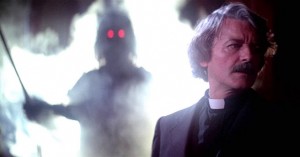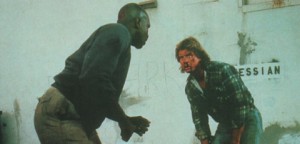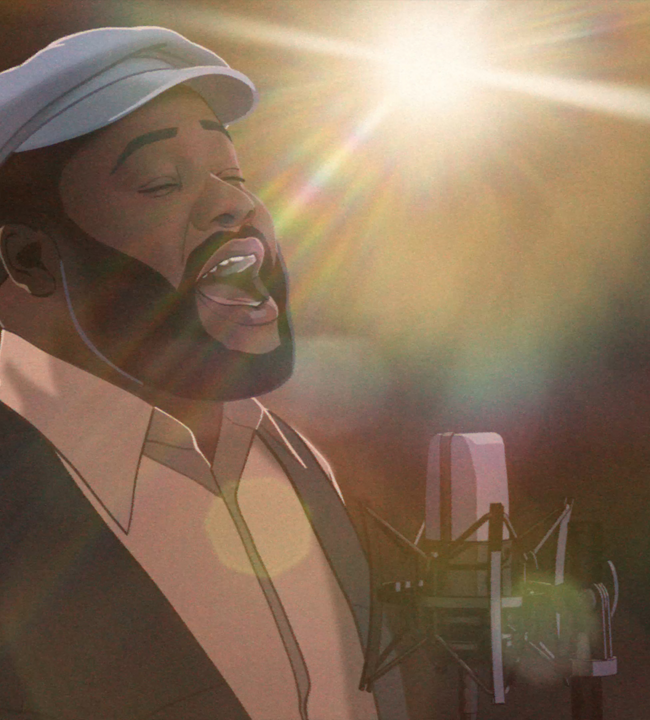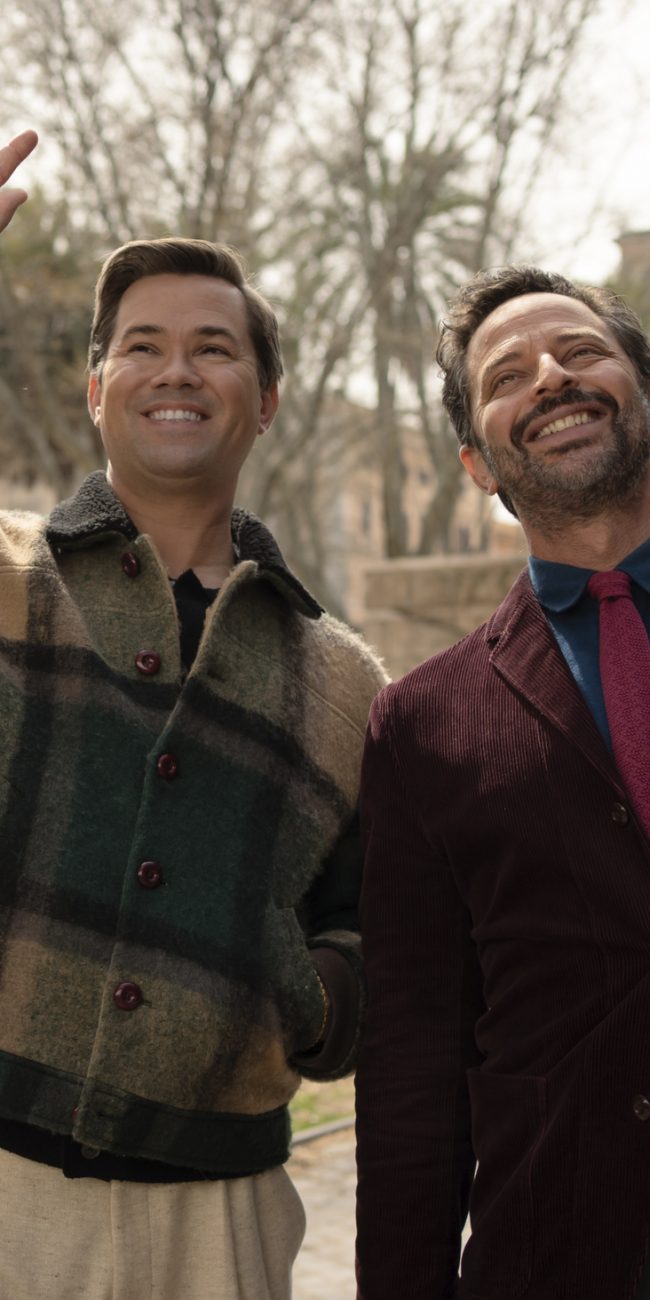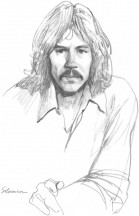 (The Brooklyn Academy of Music (BAM) is running a retrospective of John Carpenter films February 5-22, 2015. The lineup is enough to make a tear fall from your eye. Can’t make it? Don’t worry. Hammer to Nail has you covered as our own Evan Louison goes deep on John Carpenter: Master of Fear.)
(The Brooklyn Academy of Music (BAM) is running a retrospective of John Carpenter films February 5-22, 2015. The lineup is enough to make a tear fall from your eye. Can’t make it? Don’t worry. Hammer to Nail has you covered as our own Evan Louison goes deep on John Carpenter: Master of Fear.)
“I realized I must be reaching out to people in some way—I must have wanted their acceptance, and to be loved by them…The medium is emotional—not so much like a book or a play, really, as like music. I write a scene the way a composer writes a score. Then I take the baton and I conduct it…”
— John Carpenter (People Start Running, James Stevenson, 1980)
We were always thrilled by the darkness. Firelight, torches and candles suspended high. Townsfolk converged, pitchforks raised. Crosses, hung and painted everywhere, on walls and bodies alike. Smoke, fog, drifting through light, through the darkness, exposed. Slowly moving spectres in the background, fiends staggering at snail’s pace towards us, towards someone else with their back turned. The dead, risen and similarly staggering, often accompanied with a blank stare or a smile, and always emitting the most inhuman of sounds —- be they moaning, laughing, or heavy breathing. People suspicious of each other, of some unknown presence between them, some conspiracy threat they seem determined to evade, if only to their own risk and peril. Disaffection, the bitter taste of men crushed long since whatever war they came home from. Video images, radio static, blips on the radar of surveillance and record. Voices calling out names of friends that never answer. Sudden entrances and intrusions in the frame of some dark figure, looming in the foreground, taking us by surprise every time. Music, pulsing and throbbing, emanating from every dark corridor or shadow, every pitch black corner hiding another Shape….
Herein lie the images and sounds that awaited you, tipped headfirst into the work of a New York born, Kentucky raised and matinee educated filmmaker by the name of Carpenter, at the ripe age of 13, an age exposed to substances for the first time and harboring the newly minted secret of shame. You sought refuge in the local video store, a place where in a few years time you would become a full-time employee (and nearly a resident). You threw yourself into those rows of racks, tearing through the wire-shelves filled with titles like Barfly, La Haine, Black Cat White Cat, A Perfect World, Andy Kaufman’s Heartbeeps, —- the list goes on. There were endless possibilities for you in this world, endless doorways to worlds you’d yet to and probably would never experience, always another rabbit hole to disappear through. Like the temporary portal in the floor of the CABLE 54 TV station in They Live that Roddy Piper and Keith David disappear into, it felt like there was a clock counting down somewhere, always destined to beat you to the end of the path. Perhaps this is what began the feeling of time never being enough, this period. But most definitely, this began the hunger and the thirst for narratives that would engage for you a drive that still exists this day.
There’s something that happens to you over and over again in John Carpenter’s history of cinema, and its hard to pinpoint at times, because it feels like many things. But it is not many things, but one things —- it is Carpenter’s touch. It is the same demeanor carried by all his heroes and monsters in their every motion —- determination. There is a propulsion, perhaps like an animal intensity, driving each of them, the just and the corrupt. It comes from the same place, a place where people make choices of desperation and must act upon them, suffer their consequences, and perhaps survive to heal again. It is a hulking mass of a man’s body, breathing heavily, perhaps under the weight of some physical strain, perhaps just the weight of living in a world surrounded by danger. You put yourself into the faces and lives of these characters, place yourself within their excitement and urgency, within the sphere they seem to contend with, and find yourself understanding. Understanding of the agency within any of these sudden heroes’ chests, be they the heroes formed of an innocent teenage girl, a haunted drifter, a good doctor, a Priest with a murderous legacy, a pilot, a soldier driven by war and hardness to crime, their full trust in the basic governance of good in their world eroded by trauma. Understanding of the ability of those bodies and wills to heal and face that same world again.
heroes and monsters
Good guys and bad guys don’t just play in Carpenter’s ether, they run it. They divide the world down to the primordial core, like a wall around Manhattan Island, put in place to keep the refuse in. Even in the most corrupt and damaged of a character, Carpenter allows only one line to be drawn: good or bad. The good may be willed by revenge, some unspoken rift with the common population, or explicit self-defense, but they are never perfect. There is always some human imperfection, be it their sensibility’s limitations or simplicity, or their own physical weakness to temptation or pain. But they are always good.
Laurie Strode, a role for which Jamie Lee Curtis is never truly credited properly for, brings a nuance of trauma and repression to the beset upon 18 year old high school girl, where previously there was always just the tortured victim in films following the Final Girl archetype. It seems almost fate that she should be thrust into these circumstances, shadowed and hunted so. In both Halloween and The Fog (immediately following it chronologically), Curtis’ expands upon that quiet girl facing unknown forces, showing her frightened but never bowed, bent but never broken by whatever evil sights set upon her. There is more history in her face, her seemingly blank faced innocence, than most of these Final Girls left standing throughout cinema, usually covered in blood. There remains a certain prurient desire to see a young girl sullied with the grime and residue of violence but still attaining survival (still standing, to tell the tale…) throughout this vein of American cinema, and cinema at large. Would that it come from an analogous faith in Goodness, or the human spirit, rather than the fetish it reeks of, to see Goodness dragged through the mud and made disgusting if it must survive. At very least, Carpenter subverts this construct, giving this heroine the chance to retain a little grace in her fight. This would prove both prescient and in line with his worldview —- that no matter what, evil exists. It lives, in and around us all. But Good is still breathing too. And maybe bought just a little more time.
This one; the Wartorn, the Battlescarred, like most of Carpenter’s characters (and performers), recurs through these stories, so much so that it begins to make sense that these are the people in this world, and yes, you’ve met them before. This one makes many an appearance in these motion pictures, just as others do. With Assault on Precinct 13, the first 40+ minutes of screen time passes before you know who everyone is, cops and robbers and killers alike, all of them so battle scarred and tarnished you can hardly tell the difference. This is a film where characters actually say things like “There are no heroes anymore. Just men who follow orders,” Carpenter’s strings showing a little all throughout. In spite of its clunkiness, the film is literally the beginning of a long line of heroes and villains who could easily be for either side till seen in action and up close, a lineage with many entries to come. Here, in this deathtrap, “one night of hell on earth” serial, Carpenter began his exploration of these types —- the lost, disaffected, angry —- but never ordinary. At one point in the story a receptionist caught in the aforementioned police station, besieged, says to death row prisoner Napolean Wilson now fighting alongside her, “The very least of our problems is we’ve run out of time, to which Wilson replies, “That’s an old story with me… I was born outta time.” It should leave no little surprise that following The Fog, Carpenter continued to fill desperate situations with diverse (but still, desperate) groups of men, women, misfits, outcasts, loners, and the seemingly lost, surround them with a threat, box them in, and leave them to their own device, to figure a way out of his trap. Force unlikely comrades to band together, work together, to defeat something in the dark, against all odds and in spite of themselves. With Escape from New York and The Thing, and later returned to in They Live, Carpenter centers his narratives on the battles of a single veteran, plagued by an impossible set of obstacles, but with the wherewithal and secret power to persevere. In a way, Kurt Russell continues the sneer and streak he established with the now cult-legendary Snake Plissken of Escape, easily one of the most iconic heroes of the last 35 years, in his RJ MacReady, alcoholic chopper pilot stuck on an Antarctic hellscape in The Thing. Plissken and MacReady (later too, Rowdy Roddy Piper’s John Nada in They Live) both demonstrate a principle of Carpenter’s heroes : survive, at all costs, trust no one, don’t get too close to anything that isn’t them, and always have a scurrilous reply at hand, armed and ready to deploy.
They are ex-military, meaning they have seen things worse than this evil right here, this one, the current evil. Nothing can compare to whatever it is lying in wait behind their tired eyes, and that comes from before. No matter what, this battle will not be their last. They’re not Supermen, they’re just men. Men driven to the extreme, but tried and true, men who’ve had enough. Be it in a ring with a Giant, armed with spike-driven bats and trash barrel lid shields, or on the South pole’s frigid terrain, wielding a flamethrower, the spit stuck in their beards and the bloodlust in their eyes proves they’re not men who like doing these things, this thing, this killing—but they are men who will do what needs to be done. It is this easy resolve that makes Carpenter’s trajectories feel somehow, as outside of the realm of logic and reality they may step, at home and acceptable in our minds.
At every opportunity, at some point in each narrative, with each hero, Carpenter reveals something, some event, some realization for the character, that changes the world as they know it completely, and yet there never seems to be any resistance to this new reality. The characters react as they know how and as they only know how: run with it, and to soldier on. All of a sudden, the town they’re in is attacked by ghosts who travel under the cover of bad weather. All of a sudden, a babysitter realizes she’s being stalked, her friends already decimated. All of a sudden, this church some graduate students are asked to spend the night in becomes the apex of an ancient evil’s birth. These characters, no matter how frightened, they all just fight. What else is there for them to do?
Buried at times in the ensemble, peripheral and there only for color as it would seem, the Prophet of Doom is another recurrent player in these tales of chance and fate, and gives pause as such, for it may indeed be the most parallel to Carpenter himself. “The first movie they ever took me to was The African Queen,’and what I remember most is Humphrey Bogart coming out of the water covered with leeches,” Carpenter would recall at the time of Halloween’s box-office massacre (shot in 20 days for $300k, made $47mdomestic alone). Bogart in The African Queen is the best possible touchstone we can sight in the search for Carpenter’s paradigm, that of the world-weary old soldier who refuses to die or fade, but also the film’s helmsman, John Huston. In Huston, perhaps Carpenter saw a chronicler of great adventure, a man in the extreme who preferred to report upon such men. But perhaps the loss of innocence for the greater culture, experienced by so many in dismay throughout the 60s and 70s, informed an experience of his own in which he felt necessary to chronicle the loss of an Age of Valour and valiant heroes, and usher in the Age of the Apocalypse.
Perhaps in Donald Pleasance’s Dr. Loomis (Halloween), in Hal Holbrook’s Father Malone (The Fog), Wilford Brimley’s Blair (The Thing), and Donald Pleasance’s Priest (Prince of Darkness), there is something of a homemade pattern, a form which reflects the maker as much as the fiction. All of these know something, some secret the rest of the world cannot accept or understand, no matter how they try to explain, no matter how they rave. “A secret that can no longer be kept,” Pleasance’s Priest tells a scientist of an urn found in the Church’s catacombs containing the Dark Lord’s lifeforce. They know about the Evil. The Evil that is coming, that is already here. They try to warn us, but it is already too late. If Carpenter didn’t see himself this way, in some way, for this almost perfect, select number of years, you’d be surprised. Shocked even. Because the writing is on the walls, usually spelled out in either human blood, other strange bodily fluids, or both.
— Evan Louison
(In part two of “Darkness Exposed,” Evan dives deeper into the darkness that defines the work of John Carpenter)







